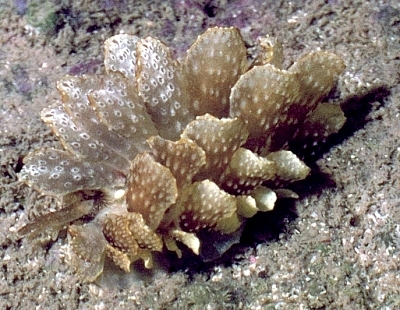
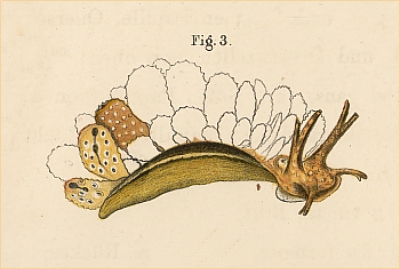
Cyerce pavonina
Bergh, 1888
Order: SACOGLOSSA
Superfamily: LIMAPONTIOIDEA
Family: Caliphyllidae
DISTRIBUTION
Probably wide Indo-West Pacific distribution. [Known only from original description - Philippines; and record on Forum from Tanzania].
PHOTO
Upper: Bahari Beach, 1km N of Kunduchi Beach, Dar es Salaam,Tanzania, 10 August 1975. Photo: Bill Rudman. Lower: Plate 77 fig. 3, from Bergh, 1888.
The body is a typical shape for a species of Cyerce with bifurcating rhinophores and the sole of the foot split in two with a transverse groove just behind the rhinophores. The body is mostly covered by large flattened paddle-shaped cerata, which are easily autotomised, and continue to wiggle and exude sticky secretions for many hours after being cast off.
The shape and colour of the cerata is characteristic of the species. The inside face of each ceras [upper side when cerata are lying flat] are translucent clear with many raised transparent pustules scattered all over. Each transparent pustule is surrounded by a white ring, formed from clusters of opaque white specks, possibly glands. The outside face of each ceras [lower side when cerata are lying flat] is an opaque greenish brown colour with scattered slightly raised nodules which are dull whitish in colour. The edge of the cerata has a yellowish band and raised whitish nodules. The ceratal stalk is colourless and on the outer side there are two elongate marks, a black one close to the attachment point and a larger red one further up.
The body is translucent clear a greenish tinge, and scattered microscopic white granules. There is a dark brown band across the head, at eye level, and a lighter brown colour on the oral tentacles and rhinophores. The general colour pattern of the cerata gives the slugs the appearance of a soft coral colony, the outer face looking like contracted polyps while the inner face looks like feeding polyps.
To my knowledge this species has only been recorded from the Philippines (Bergh, 1888) and Tanzania (Rudman, #21885 ).
-
Bergh, L.S.R. (1888) Malacologische Untersuchungen. In: C.G. Semper, Reisen im Archipel der Philippinen, Wissenschaftliche Resultate. Band 2, Heft 16a., 755-814. (Pls. 77-81)
Rudman, W.B., 2008 (September 15) Cyerce pavonina Bergh, 1888. [In] Sea Slug Forum. Australian Museum, Sydney. Available from http://www.seaslugforum.net/find/cyerpavo
Related messages
Re: Cyerce cf. pavonina from sthn Queensland
September 17, 2008
From: Julie Marshall

Concerning message #21095:
Dear Bill,
Attached is the species I have been calling Cyerce cf. pavonina. It was found at Heron Island [Great Barrier Reef] at the reef crest under a dead coral slab at low tide. It was 35 mm in size. The colour and shape of the cerata seem similar to the original description of this species.
Locality: Heron Island, Intertidal, Queensland, Australia, Pacific Ocean, December 1995, Intertidal. Length: 35 mm. Photographer: Julie Marshall.
Best wishes,
Julie mMarshall
juliegm@gmail.com
Marshall, J.G., 2008 (Sep 17) Re: Cyerce cf. pavonina from sthn Queensland. [Message in] Sea Slug Forum. Australian Museum, Sydney. Available from http://www.seaslugforum.net/find/21890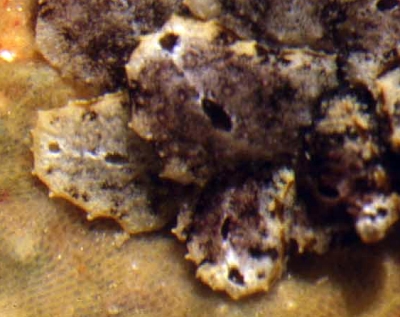
Dear Julie,
This certainly looks close to 'typical' Cyerce pavonina, especially in the presence of the two 'black holes' near the tip of the inner face of each ceras. I can't see any sign of this ceratal colouration in the animals on the Forum I have labelled Cyerce sp. 4. so there is no way from photos to link them to C. pavonina. Your photo however shows signs of smaller 'holes' scattered over the inner face of the cerata. They are not surrounded by white granules but they seem to have a white central spot - which I assume is the white tip to the transparent papillae.
Best wishes,
Bill Rudman
Cyerce pavonina? from Reunion Island
September 17, 2008
From: Philibert Bidgrain
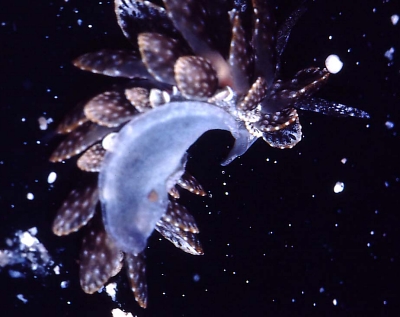
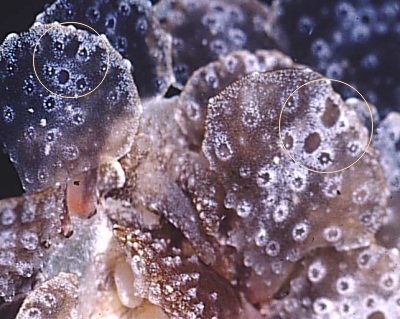
Concerning message #21885:
Dear Bill,
Reunion Island seaslugs
I have in my collection this specimen found some years ago by Maurice Jay
I think it could also be Cyerce pavonina. I have included a close up of the cerata with the characteristic pattern.
Locality: Saint Paul, Reunion Island, Indian Ocean. Photographer: Maurice Jay.
What's your opinion about this specimen?
Philibert Bidgrain
pbidgrain@yahoo.fr
http://vieoceane.free.fr/runseaslug/indexslug.htm
pbidgrain@yahoo.fr
Bidgrain, P., 2008 (Sep 17) Cyerce pavonina? from Reunion Island. [Message in] Sea Slug Forum. Australian Museum, Sydney. Available from http://www.seaslugforum.net/find/21893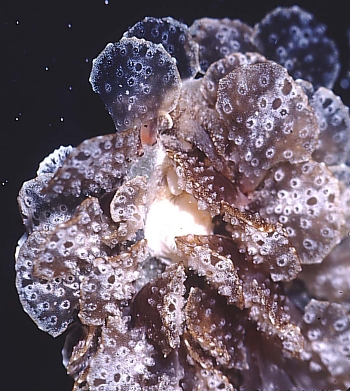
Dear Philibert,
Thanks for your rapid response to my message. Maurice Jay's photos confirm my comments in Scott Johnson's message [#21887], that an earlier photo from Sth Africa [message #1047 as Cyerce sp. 2] is a dark form of C. pavonina. What is proving to be distinctive are the two larger 'black holes' near the tip of each ceras. Of course they are not holes - just an illusion - but they certainly look like the siphons of an ascidian.
Best wishes,
Bill Rudman
Re: Rediscovery of Cyerce pavonina in Tanzania
September 16, 2008
From: Scott Johnson
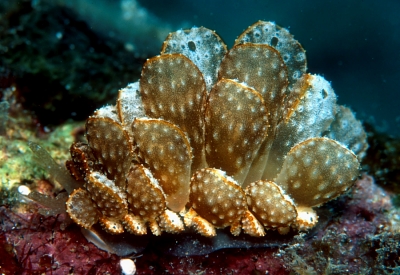
Concerning message #21885:
Hi Bill,
Thanks much for the ID on Cyerce pavonina. I've been wondering about the attached animals from the Marshall Islands for some time. These three photos show two separate individuals. The color I think is accurate. I currently have these listed as Cyerce sp. e356 on the Marshall Islands nudibranchs website, so I will have to make some changes there. My site is one of those figuring a different species as "Cyerce cf pavonina " on the web (based on a calendar photo); that will need changing too.
Locality: Kwajalein Atoll, 5-10 m, Marshall Islands, Pacific, 01 December 1991, Coral reef, under rocks. Length: 40 mm. Photographer: Scott and Jeanette Johnson.
I have another color form of what I suspect is Cyerce pavonina as well. I have it listed under a separate species number on my site, but only because I tend to be overcautious. I will send those separately [message #21887 ].
Scott
uwkwaj@yahoo.com
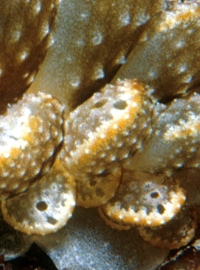
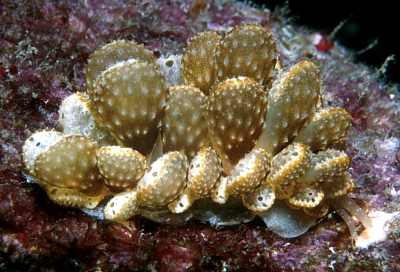
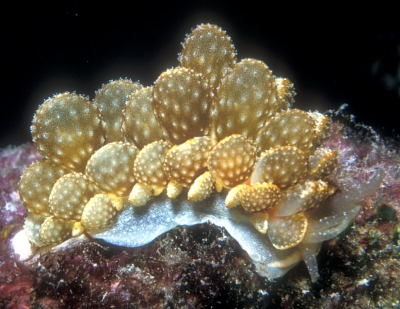
Dear Scott,
It's nice to get some more records. I should have seen these on your website but I just run out of time. Yes the colours in your photos matches my fieldnotes and drawings well. Looking at your photos, ther are a pair of colourless pustules near the tip of each ceras which look just like the pores or siphons of a colonial ascidian.
Best wishes,
Bill Rudman
Re: Rediscovery of Cyerce pavonina [2]
September 16, 2008
From: Scott Johnson
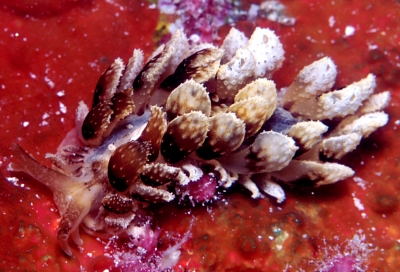
Concerning message #21885:
Hi Bill,
To accompany mw earlier message [#21886], here are the other animals I think are color forms of Cyerce pavonina. I have this species currently figured on the Marshall Islands nudibranchs website as Cyerce sp. e479.
Locality: Kwajalein Atoll, 5-10m, Marshall Islands, Pacific, 15 and 22 July 2002, Coral reef, under rocks. Length: 40mm. Photographer: Jeanette Johnson.
Scott
http://www.underwaterkwaj.com
uwkwaj@yahoo.com
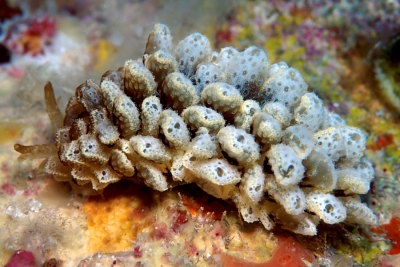
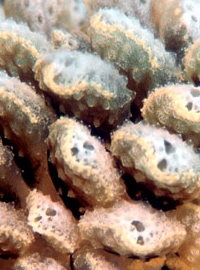
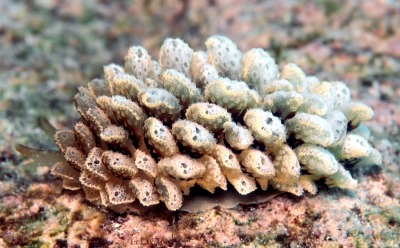
Dear Scott,
Thanks for these. The inside of the cerata seem to be very characteristic. I have been looking at an earlier photo from South Africa [message #1047] which I have on the Forum as Cyerce sp. 2, and I am pretty sure it is also C. pavonina. The darker animal in your upper photo seems to be an intermediate between the Sth African animal and the more 'typical' yellow-brown animals.
Best wishes,
Bill Rudman
Rediscovery of Cyerce pavonina in Tanzania
September 15, 2008
From: Bill Rudman
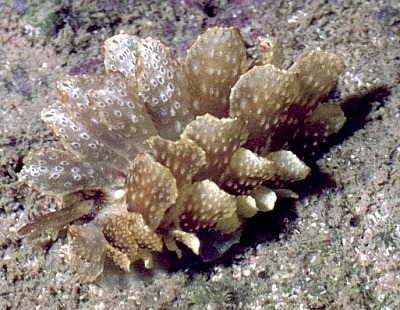
To accompany some recent messages on species of Cyerce, here is a record of Cyerce pavonina, which I am pretty sure is the first record of the species since its original description from the Philippines 120 years ago (Bergh, 1888). Unfortunately I only found a single animal and as photographic film was hard to obtain the only film available was Agfa slide film which I don't think renders colours accurately and certainly has deteriorated over time. Despite that, if you compare these photos with the painting from Bergh's description [see Fact Sheet], they could have been from the same animal.
Locality: Bahari Beach, 1km N of Kunduchi Beach, Dar es Salaam, Tanzania, 10 August 1975. Length alive 38 mm.Photo: Bill Rudman.
The body is a typical shape for a species of Cyerce with bifurcating rhinophores and the sole of the foot split in two with a transverse groove just behind the rhinophores. The body is mostly covered by large flattened paddle-shaped cerata, which are easily autotomised, and continue to wiggle and exude sticky secretions for many hours after being cast off. In my field notes I record "when touched, the cerata stick to ones fingers and autotomise - they then wriggle around swimming and even 2 days after breaking off are still capable of contracting and changing shape ".
The shape and colour of the cerata is characteristic of the species. The inside face of each ceras [upper side when cerata are lying flat] are translucent clear with many raised transparent pustules scattered all over. Each transparent pustule is surrounded by a white ring, formed from white rice-grain shaped granules standing vertically. The outside face of each ceras [lower side when cerata are lying flat] is an opaque greenish brown colour with scattered slightly raised nodules which are dull whitish in colour. The edge of the cerata has a yellowish band and raised whitish nodules. The ceratal stalk is colourless and on the outer side there are two elongate marks, a black one close to the attachment point and a larger red one further up.
The body is translucent clear a greenish tinge, and scattered microscopic white granules. There is a dark brown band across the head, at eye level, and a lighter brown colour on the oral tentacles and rhinophores. The general colour pattern of the cerata gives the slugs the appearance of a soft coral colony, the outer face looking like contracted polyps while the inner face looks like feeding polyps.
On some websites, a species of Cyerce, which could well be a colour form of what I am calling Cyerce sp. 1, are labelled Cyerce cf. pavonina. They don;t seem to have any if the features I would consider typical of C. pavonina
-
Bergh, L.S.R. (1888) Malacologische Untersuchungen. In: C.G. Semper, Reisen im Archipel der Philippinen, Wissenschaftliche Resultate. Band 2, Heft 16a., 755-814. (Pls. 77-81)
Best wishes
Bill Rudman
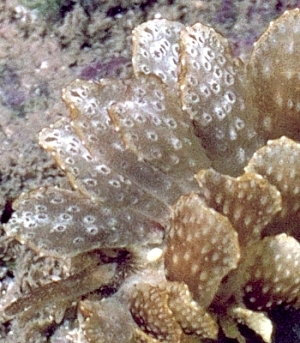
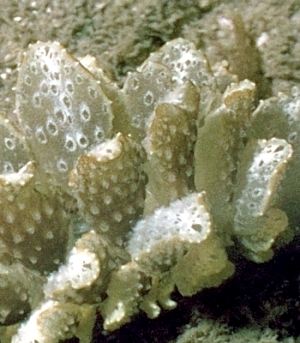
Cyerce sp. 2. from South Africa
March 25, 2000
From: Ernest C.J. Seamark
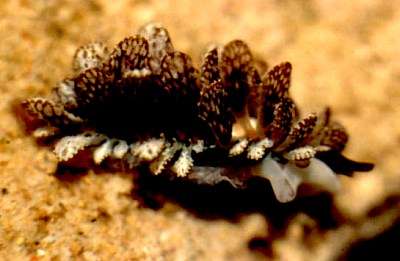
Note added 17 September 2008: This is a colour form of Cyerce pavonina. [See message #21893].
Dear Bill,
This species was collected from under a rock in a sandy bottom of the Treasure Beach intertidal zone, South Africa on 17 Feb 1999.
[Treasure Beach is in Durban, KwaZulu Natal, South Africa.]
Ernest C.J. Seamark
kearneyt@biology.und.ac.za
Seamark, E.C.J., 2000 (Mar 25) Cyerce sp. 2. from South Africa. [Message in] Sea Slug Forum. Australian Museum, Sydney. Available from http://www.seaslugforum.net/find/1047Dear Ernest,
Thanks for the photo. This seems to be a species of Cyerce but I don't recognise it. It is perhaps unnamed.
Best wishes,
Bill Rudman.
